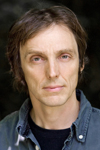It was one of the most beautiful experiments of all time. Equipped with a cannonball and a musket-ball, Galileo climbed the steps of Pisa's famous leaning tower, and, together with the intelligentsia of that glamorous Italian city, watched them drop to the ground at the same speed. In one simple stroke he had disproved Aristotle's notion that objects fall at a rate that depends on their bulk.
This story is still routinely retold in popular accounts, but historians have long doubted that Galileo ever really performed the experiment - not even from the roof of his own house, let alone from the famous tower. They usually consider it instead a 'thought experiment', which proves a point without actual experimentation. The philosopher of science James Robert Brown has called it "the most beautiful thought experiment ever devised".
“Gushing, worshipful biographies that embellished the truth were typical of those times.”
But the truth is murkier still, according to Paolo Palmieri, a science historian at the University of Pittsburgh. He suggests in the journal Studies in History and philosophy of Science A that Galileo might not even deserve credit for the beautiful idea1.
Palmieri says that it wasn't until late in his life that Galileo unambiguously stated that, in the absence of air resistance, all bodies fall at the same rate. And even then, his conclusion was the outcome of a rather complicated and meandering line of reasoning. It was only in retrospect, Palmieri says, that Galileo and his supporters cleaned up the arguments into a simple story.
The horse's mouth
 Did Galileo really drop anything off the leaning tower of Pisa? Probably not.© Punchstock
Did Galileo really drop anything off the leaning tower of Pisa? Probably not.© PunchstockIt is often assumed that the most reliable way to find out what really happened along the road to a particular discovery or breakthrough is to consult the scientists responsible for it. But it may be unwise to take their accounts at face value. That is clear enough when there are disputes over who did what first. But even in more amicable cases, the stories told by the leading players don't always match up.
To some degree, discrepancies and distortions can be excused by the natural tendency to emphasize one's own contributions. Equally natural, if perhaps harder to spot, is the inclination to construct a logical narrative from what was at the time a far more confused agenda - to say "of course that's what I was looking for all along", and even to believe it yourself.
But Palmieri's analysis of Galileo's work on falling bodies seems to imply that the legend was much more consciously constructed than that.
Don't believe the hype
It has long been recognized, for example, that there is no account by Galileo himself of the 'leaning tower' experiment. Instead it appeared in a biography by Vincenzo Viviani, who became the elderly Galileo's secretary. Gushing, worshipful biographies that embellished the truth were typical of those times, so perhaps Viviani's work shouldn't be taken at face value.
The most-quoted description of Galileo's work, as written in his own hand, is taken from his book Two New Sciences, written in 1638, four years before his death. But Galileo did his initial theorizing four decades earlier, and wrote about it in the unpublished manuscript De motu. Palmieri shows that there and in the manuscript Postils to Rocco, written around 1634-5, the story is more complex.
In particular, Galileo does not say in De motu that all objects take the same length of time to fall from the same height in a vacuum, regardless of what they are made of. Rather, he proposed this only for objects with the same density - like a musket-ball and a cannonball. In Postils he extends this claim to objects of any density, but admits that this conclusion is based on theoretical conjectures, not experiments. Yet in Two New Sciences, his earlier prevarications disappeared.
Too good to check
It wouldn't be the first time or the last that famous work has been thus constructed. What has often been voted chemistry's most beautiful experiment - the discovery of molecular handedness through Louis Pasteur's self-described optical work with tartrate crystals in 1848 - might not have been what it seems either. Pasteur's original lab notebooks make it plain that he wasn't initially concerned with optical activity at all, nor was the experiment as simple as it later sounded.
It was in fact quite common for nineteenth-century scientists to embellish and mythologize their discoveries. This is probably the origin of stories that the structure of the benzene ring came to August Kekulé in a dream, and that Dmitry Mendeleyev dreamed up the periodic table. It is possible that these scientists never expected to be taken quite so literally by subsequent generations.
It is so easy to swallow these stories, along with the Galileo legend. But surely textbooks and popular science histories should not fall prey to the same thing as trash journalism - the story too good to check. Such tales make for an entertaining and colourful read, but they are bad history.

